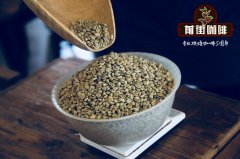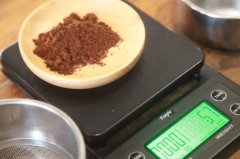The best quality of washed coffee beans is Costa Rican coffee beans? Washing coffee beans steps

Professional coffee knowledge exchange more coffee bean information please follow the coffee workshop (Wechat official account cafe_style)
Costa Rican coffee beans are one of the coffee producing areas familiar to coffee drinkers. They are located in the isthmus of Central America. At the same time, they are regulated by Pacific and Atlantic currents and sea breezes. They are towering volcanoes up to 2000 meters above sea level. Coffee berries are slowly brewed in fertile volcanic ash soil and cool environment at high altitude, giving birth to coffee beans with complete and rich flavor.
At present, Costa Rica has eight main producing areas, namely: Guanacaste, West Valley, Central Valley, Turrialba, Orosi, Tres Rios, Tarrazu and Brunca. Costa Rica can be divided into two seasons each year, with the dry season from December to April, when coffee is harvested, and the wet (rainy) season from May to November. Wet stripping (Wet-Hulling)-the rarest treatment method
Wet peeling, also known as semi-washed coffee beans, is most commonly used in Sumatra, Indonesia. Because of the treatment process, the flavor of wet plucking method can be said to be complex and changeable, and the aroma of herbs, spices and medicinal materials is the overall tonality. But from time to time, there will be wood, soil, musty taste, which may not be liked by some drinkers.
Basically, the wet wave method is a unique treatment method in Indonesia. Due to the humid climate, easy rain, short sunshine time, and the general economic difficulties of coffee farmers, they want to shorten the processing time of coffee beans and sell the processed coffee beans to coffee manufacturers as soon as possible.
Remove floating beans (same sun method)
Pour the coffee beans into a large tank, the underdeveloped inferior beans will surface, and the ripe and full fruits will sink to the bottom of the water. At this time, the floating beans on the surface will be removed, that is, the steps of removing floating beans will be completed.
Remove peel and pulp (same washing method)
Through the pulp screening machine (pulping machine), remove the exocarp and pulp of the coffee fruit (leaving pectin, endocarp and silver peel).
In the early days, most of the coffee beans in Costa Rica were famous for washing coffee beans and dealing with coffee beans. The washed coffee beans had elegant green apple acidity and clean flavor.
However, there is a great need for the use of water resources, which is not only expensive, but also has a great environmental impact.
In recent years, Costa Rica has made great efforts to develop honey treatment, and many micro-processing plants have been set up one after another.
The manor will harvest coffee beans with full maturity and good quality, in order to save water resources, use a pulper to remove the outer peel, use a scraper to adjust the scraping degree of the pulp, and place the peas with pectin on the so-called African scaffolding for sun exposure.
It is also necessary to maintain proper ventilation in the drying process, otherwise the failed honey treatment will easily have an uncomfortable smell of excessive fermentation.
Ferment
The coffee fruit treated by the pulp screening machine was put into the fermentation tank 10Murray for 12 hours to ferment briefly.
The first sun exposure
The fermented coffee fruit will be naturally dried until the moisture content is reduced to about 35%.
Remove pectin and endocarp
Remove pectin and endocarp by manual or special machine. Due to the high water content, the internal coffee seeds are still squeezed in a wet and soft state, so the coffee beans will be in the shape of a half moon.
Important Notice :
前街咖啡 FrontStreet Coffee has moved to new addredd:
FrontStreet Coffee Address: 315,Donghua East Road,GuangZhou
Tel:020 38364473
- Prev

What's the difference between washed coffee beans and sun-washed beans? why are washed coffee beans cleaner?
More information about coffee beans Please follow the coffee workshop (official Wechat account cafe_style) Coffee workshops are the most widely used treatment in countries where it often rains and the humidity is high, although the process is relatively cumbersome. Because of the use of a lot of water washing method, the flavor and taste are quite clean. Coffee bean washing method is also mostly with bright fruit acid.
- Next

Why do you sift out the fine powder and then pour it back and cook it? When is the time to add fine powder?
The editor saw a very interesting technique when he went to watch the game before. After grinding the coffee powder, he sifted out the fine powder, and then poured it back for extraction.
Related
- What is the meaning of lactic acid fermentation with coffee bean treatment?
- How to judge the state of foam by sound?
- How does the latte pull out the unicorn pattern? Come to get for a little trick to improve the flower pull!
- Will flower pulling affect the taste of the latte?
- Do you know the history of coffee?
- The difference between honey treatment and sun washing what is raisin honey treatment?
- What kind of milk can a novice use to make coffee foam to keep the foam longer? The correct method and skills of milking tutorial sharing
- Why do washed coffee beans taste sour? Flavor characteristics of washed Coffee
- Introduction to the skill of how to practice the size and height of water injection around the circle of hand-brewed coffee
- How do beginners practice coffee flower drawing from scratch?

